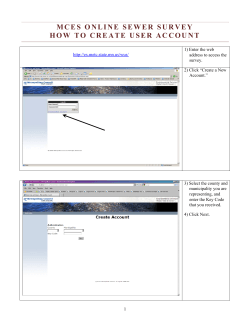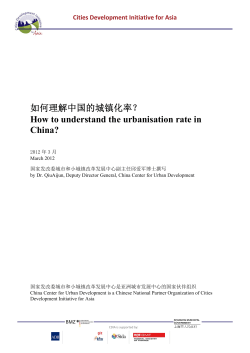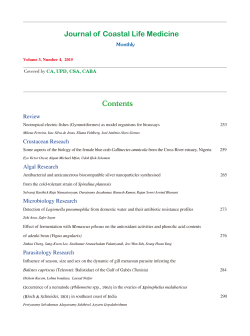
SEAPORT - North Sea Region
SEAPORT Background Many small towns around the North Sea’s coast are facing challenges to their local economies. As new cooperative structures between larger seaport towns have come into existence, the shipping industry has focused its business on the bigger coastal cities, restricting the ability of smaller ports to compete. In addition, European Union policies aimed at the reduction of fishing in the North Sea Region have meant that maritime communities can no longer rely on selling seafood for their livelihoods. However, communities whose revenues have traditionally been based around the sea need not fall into economic decline – North Sea coastal towns can tap into a whole range of new, innovative economic opportunities. Activities such as watertaxis, maritime tourism, or the restoration of historic lighthouses could be the key to economic regeneration in small North Sea coastal towns. By exchanging these sorts of fresh concepts and strategies, networks of small North Sea towns could become vibrant economic players. Aim The SEAPORT project promotes the economic regeneration of North Sea coastal towns through innovative local projects. Given that these towns face common challenges and have similar assets to build on, learning from each other is essential. SEAPORT will establish a comprehensive set of guidelines for use in planning by government administrators and consultants. The project will also document successful waterfront development and analyse the success factors of the cases. Activities and Outcomes SEAPORT currently involves five project partners: The Hartlepool Borough Council in the UK, the Ministry of the Flemish Community and the Municipality of Nieuwpoort in Belgium, The Hague in the Netherlands, and the Municipality of Bremerhaven in Germany. The coastal communities associated with each of the project partners work on original projects and creative solutions to strengthen their local economic structure. Later, these projects – and a detailed, first-hand account of how they can be implemented – will be compiled in the project’s guidebook, serving as a resource for all other coastal towns interested in new techniques for economic growth. fishing harbours of Bremerhaven. Both Nieuwpoort and The Hague are working on a masterplan to create a more attractive waterfront. It is expected that once these types of economic activities come to replace traditional fishing-related occupations as motors of the local economy, and more and more tourists are attracted to North Sea Coastal towns, other businesses will also see these communities as appealing targets for investment. development. The goal of the cooperation is to expand the existing network and combine the available knowledge in a database of best practices for successful waterfront development and the “do’s and don’ts” of waterfront development. These projects involve a total of 26 towns around the North Sea associated with the projects’ lead partners – The Hague (Seaport), the Port of Rotterdam (B-Sure), and Delfzijl (Revithar) in the Netherlands, and Edinburgh (The Waterfront Communities Project) in the UK. The Future As more projects are completed in the core project regions, the project guideline book will continue to expand and will be made available on SEAPORT’s website. SEAPORT will cooperate with three other Interreg IIIB North Sea Region projects also dealing with the subject of waterfront The projects highlighted by SEAPORT arise as local initiatives, and respond to specific challenges and opportunities in each community. In Flanders, for example, the historic, but now unused fishing harbour of Zeebrugge is being completely renovated, and will serve as a focal point for tourists and yachting enthusiasts. In the UK, The Hartlepool Borough Council is promoting the velvet-crab-fishing industry, and sales of this edible delicacy are expected to generate new jobs and revenue in the local community. In Germany, project partners are working on the bus-bike-boat connections in the old Did you know... Despite embracing new economic activities, North Sea coastal towns are not forgetting their gastronomic assets. Each partner in the project has its own speciality to offer to seafood enthusiasts, whether it is shrimps in Flanders or velvet crabs in Hartlepool, raw herrings with onions from The Hague or fish fingers from Bremerhaven. Graaf Jansdijk waterfront in Zeebrugge, Belgium. Lead Partner contact details NL 128 Municipality of The Hague Project manager: Swati Sen Gupta E-mail: s.sengupta@dso.denhaag.nl Tel. +31 70 353 4111 Website: www.seaport-northsea.nl List of project partners G UK B B Municipality of Bremerhaven Hartlepool Borough Council Ministry of the Flemish Community AWZ Municipality of Nieuwpoort Visit of the SEAPORT team to the seaside heritage site of Seaton Carew (Hartlepool), UK. Financial facts Start date: 29 September 2003 End date: 31 December 2006 ERDF: € 3,802,787.50 Total eligible sum: € 7,605,575 Stimulating Economic Regeneration and Attractiveness of Port Towns 51 129
© Copyright 2025











